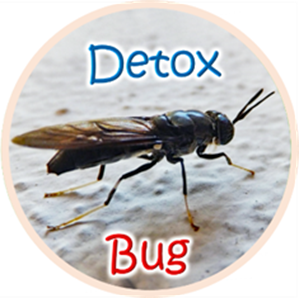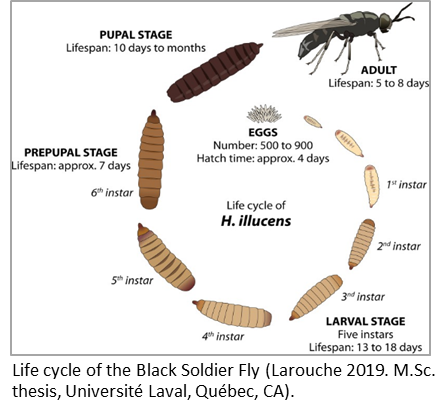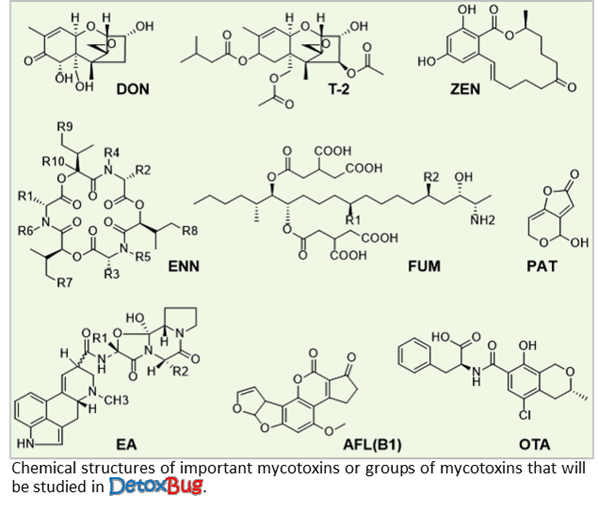
Background
Insect farming can play a key role in making feed for farmed fish and domestic animals more sustainable. Proteins and fat of insect larvae are valuable resources, which can replace less environmental-friendly produced materials. Insect farming requires less water, chemicals and space than conventional agricultural production, reducing the carbon and ecological footprint.

The larvae of the Black Soldier Fly (BSF) (Hermetia illucens) are of special interest. They have a short life cycle: the larvae hatch from the eggs already after four days and reach the prepupal stage after 13 to 18 days. The larvae are harvested when they contain a maximum of proteins and fats just before the pupation. They are indiscriminate in their choice of feed and in principal could be grown on many different types of organic matter, including sewage sludge and mouldy food wastes without apparent effects to their welfare. This is, at the moment, however, unfeasible in commercial larvae production due to the current regulations. Nevertheless, the ability to thrive on otherwise discarded materials opens up new opportunities for increasing sustainability in feed production. However, the robustness of the insect larvae towards contaminated feeding stuffs leads to the question of what happens to the toxic compounds after uptake.

Mouldy materials may contain high levels of certain mycotoxins, which can cause serious diseases or even death in mammals. Therefore, authorities have set maximum allowed values for the most relevant mycotoxins in food and feed. It is thus important to know if novel feed produced from insect protein and fat still contains harmful mycotoxins or if the larvae are able to remove or detoxify these substances. Before this is clarified, and health risks to domestic animals and humans from the consumption of insect-containing products can be excluded, the use of waste materials in insect farming will not be permitted.
Aims of the Project
Currently, the potential detoxification of mycotoxins in BSF larvae is largely unexplored. The DetoxBug project aims to fill this data gap by studying the physiological processes (metabolism) in the larvae that result in specific changes in the mycotoxin molecular structures, decreasing their toxicity. Effects on the intestinal microbiome of the larvae will be investigated. Furthermore, the mycotoxin levels in the larvae, their faeces and rests of the feeding stuffs will be determined using a validated LC-MS/MS method.
The project is realised in a collaboration between the Norwegian BSF-producing company Pronofa AS, the Norwegian feed producer Felleskjøpet Fôrutvikling and the Norwegian Veterinary Institute.
FFL/JA funded project, 2023 – 2026.
Publications and Presentations
- Tukun F-L, Gilbert D, Kryuchkov F, Ivanova L, Fæste CK. Development and validation of a quantitative LC-MS/MS method for the simultaneous determination of 17 mycotoxins in cereal-based foods and animal feed products. Nordic Mass Spectrometry Seminar, 22.-25.1.2023.